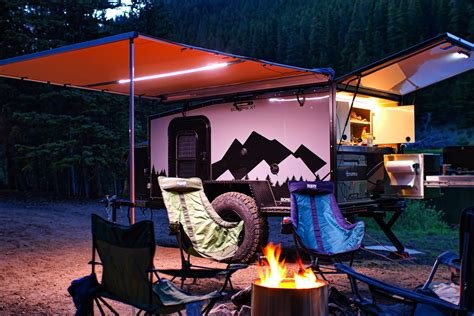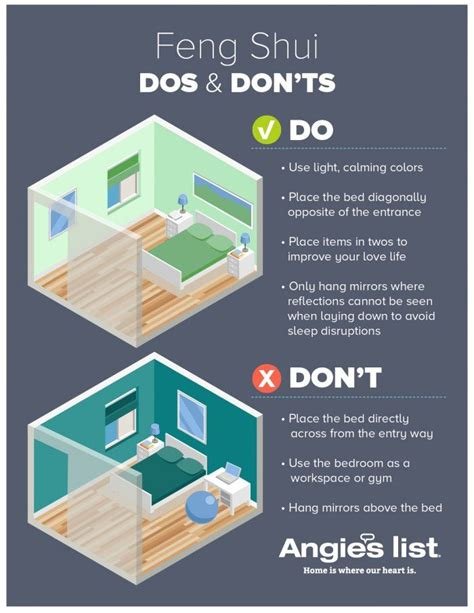The Ultimate Guide to Setting Up a Campsite
Are you ready to elevate your camping game and create the ultimate outdoor experience? In this comprehensive guide, we’ll cover everything you need to know about setting up the perfect campsite. From choosing the ideal location to setting up a safe and comfortable sleeping area, and even keeping wildlife at bay, we’ve got you covered. Whether you’re a camping novice or an experienced outdoor enthusiast, this guide will provide valuable tips and techniques to ensure a successful and enjoyable camping trip. So, grab your gear and get ready to learn how to create a campsite that’s not only functional but also enhances your outdoor adventure. Let’s dive into the ultimate guide to setting up a campsite.
Choosing the Perfect Campsite Location
When it comes to choosing the perfect campsite location, there are several factors to consider in order to ensure a comfortable and enjoyable outdoor experience. One of the most important considerations is the terrain of the campsite. Look for a flat, level area that is free from any potential hazards such as rocks or roots. This will provide a solid and stable foundation for setting up your tent and other camping equipment.
Another crucial factor to consider is the proximity of water sources. Access to clean water is essential for cooking, cleaning, and staying hydrated during your camping trip. Look for a campsite that is near a natural water source such as a river, stream, or lake, but be sure to follow any local regulations regarding water usage and purification.
In addition, it’s important to think about the surrounding environment and potential hazards. Avoid setting up camp in low-lying areas that may be prone to flooding, and steer clear of any potential dangers such as dead trees or overhanging branches. It’s also a good idea to choose a location that offers some natural shelter from wind and extreme weather conditions.
Finally, consider the scenery and surroundings of the campsite. Choosing a location with breathtaking views or easy access to hiking trails and other outdoor activities can greatly enhance your camping experience. Take the time to explore different options and find a campsite that meets all of your needs and preferences.
Essential Equipment for a Successful Campsite
When planning a camping trip, it’s essential to make sure you have all the necessary equipment to ensure a successful and enjoyable experience. From shelter to cooking utensils, having the right gear will make your camping trip much more comfortable and convenient.
One of the most important pieces of equipment to bring along is a high-quality tent. A durable and waterproof tent will provide you with a safe and comfortable place to sleep at night, protecting you from the elements and pesky insects.
In addition to a tent, it’s crucial to have a reliable sleeping bag and sleeping pad. This will provide you with insulation and cushioning, ensuring a good night’s sleep even on rough terrain.
Other essential equipment to bring includes a portable stove for cooking, a first aid kit, a multi-tool, and a flashlight. These items will help you stay safe, prepared, and well-fed during your camping adventure.
Setting Up a Safe and Comfortable Sleeping Area
When it comes to spending the night in the great outdoors, setting up a safe and comfortable sleeping area is essential for a successful camping trip. One of the first things to consider is the terrain of the campsite. Look for a flat and even surface to set up your tent to ensure a comfortable sleeping area. It’s also important to clear the area of any rocks, branches, or other debris that could create discomfort during the night.
Next, essential equipment for a successful campsite includes a high-quality sleeping bag and sleeping pad. These items provide insulation from the ground and help regulate body temperature throughout the night. Additionally, a tent that is properly ventilated and offers protection from the elements is crucial for creating a safe and comfortable sleeping area.
Another important aspect of setting up a safe and comfortable sleeping area is taking measures to keep wildlife away from your sleeping area. This can include storing food items in a secure location and using bear-proof containers when necessary. It’s also a good idea to avoid bringing strong-smelling items, such as scented toiletries, into the sleeping area to reduce the risk of attracting unwanted wildlife.
Finally, consider adding some personal touches to your sleeping area to enhance comfort. This could include a small pillow, a cozy blanket, or even a favorite stuffed animal to help you feel more at home in the great outdoors. By following these tips, you can create a safe and comfortable sleeping area that promotes a restful night’s sleep during your camping adventures.
Creating a Functional Camp Kitchen
When setting up your campsite, one of the most important areas to consider is the camp kitchen. A functional camp kitchen can make meal preparation and cooking a much more enjoyable experience during your camping trip. It’s essential to have the right equipment and organization to create a space that is efficient and convenient for meal preparation.
First and foremost, it’s important to choose a flat and stable surface for your camp kitchen. This could be a sturdy table or a portable kitchen stand. Having a level surface will make cooking and food prep much easier and safer. There are even specially designed camp kitchen stands that come with built-in storage and shelves for your cooking essentials.
Next, consider the cooking equipment you’ll need for your camp kitchen. A portable stove or grill is essential for cooking meals, and a propane or butane stove is a popular choice for its convenience and reliability. You’ll also need pots, pans, utensils, and other cooking essentials. Organize your cooking equipment in a way that makes it easily accessible while preparing meals.
In addition to cooking equipment, think about food storage and organization. Bringing a cooler or two to store perishable food items is important, as well as a sturdy storage container for non-perishable items. Keeping your food organized and easily accessible will make meal preparation much more efficient.
Building a Campfire: Tips and Techniques
When it comes to building a campfire, there are a few important tips and techniques to keep in mind in order to ensure a successful and enjoyable experience.
First and foremost, it’s essential to find a suitable location for your campfire. Look for a designated fire pit or clear an area at least 15 feet away from tents, shrubs, and trees. This will help prevent the fire from spreading and keep everyone safe.
Once you’ve found the perfect spot, it’s time to gather your materials. You’ll need dry wood, kindling, and newspaper to get the fire started. It’s important to use only seasoned wood and never burn leaves, cardboard, or trash, as these can produce harmful chemicals and create excessive smoke.
As you begin to arrange the wood in a teepee or log cabin formation, it’s important to consider the weather conditions. If it’s windy, position the fire so that the wind blows into the open side, this will help to keep the smoke away from you and your fellow campers. Once the fire is lit, be sure to never leave it unattended and always have water or a fire extinguisher nearby in case of an emergency.
Exploring Campsite Lighting Options
When camping, having proper campsite lighting is essential for safety, convenience, and creating a comfortable atmosphere. There are a variety of lighting options available to campers, each with its own advantages and disadvantages. It’s important to consider factors such as power source, brightness, and portability when choosing the right lighting for your campsite.
One popular option for campsite lighting is LED lanterns. LED lanterns are energy-efficient, long-lasting, and provide bright, even light. They come in a range of sizes and styles, from compact and portable to larger, more stationary options. Some LED lanterns are also rechargeable, which can be a convenient option for campers who want to minimize battery waste.
String lights are another popular choice for campsite lighting. These lights are versatile, easy to hang, and can provide a warm, ambient glow to your campsite. They come in a variety of styles, including solar-powered and battery-operated options, making them a flexible choice for different camping scenarios.
For campers who want to minimize their environmental impact, rechargeable solar lights are a great option. These lights harness solar energy during the day and provide soft, ambient lighting at night. They are eco-friendly and cost-effective, making them a great choice for sustainable campers.
Keeping Wildlife Away from Your Campsite
When camping in the great outdoors, it’s important to take measures to keep wildlife away from your campsite. Wild animals are naturally curious and may be attracted to food and scents at your camp. By following some simple guidelines, you can help ensure a safe and enjoyable camping experience for you and the local wildlife.
One of the most important steps in wildlife-proofing your campsite is to properly store your food and trash. Wildlife is often drawn to the scent of food, so keeping these items in airtight containers or bear-proof containers can help deter animals from rummaging through your campsite. Additionally, be sure to dispose of trash in designated containers or by following Leave No Trace principles to prevent attracting unwanted animal attention.
In addition to securing your food and trash, there are other steps you can take to keep wildlife away from your campsite. Avoid leaving out pet food or food scraps, as these can also attract animals. It’s also a good idea to clean your campsite of food crumbs and spills to eliminate any lingering scents that may draw in wildlife.
Another important consideration for wildlife management at your campsite is to be mindful of the environment and local regulations. Be aware of any wildlife that may be in the area and follow any guidelines for storing food and garbage as recommended by park rangers or campground staff. By being conscious of your surroundings and taking proper precautions, you can help minimize the risk of unwanted wildlife encounters at your campsite.
Frequently Asked Questions
What are the important factors to consider when choosing the perfect campsite location?
When choosing a campsite location, it’s important to consider factors such as proximity to water source, level ground, natural shelter, and distance from wildlife habitats.
What essential equipment should I bring for a successful campsite?
Essential equipment for a successful campsite includes a tent, sleeping bag, camping stove, cooking utensils, first aid kit, and a portable water filter.
How can I set up a safe and comfortable sleeping area at the campsite?
To set up a safe and comfortable sleeping area, make sure to clear the ground of any rocks or debris, set up a sturdy tent, and use a sleeping pad or air mattress for added comfort.
What are some tips for creating a functional camp kitchen?
When creating a camp kitchen, organization is key. Use a table or flat surface for food preparation, bring a cooler for perishable items, and pack cooking ingredients in airtight containers.
What are some tips and techniques for building a campfire at the campsite?
To build a campfire, start with a fire ring or designated fire pit, gather dry firewood and kindling, and follow proper fire safety guidelines such as keeping the fire at a manageable size and always having water or a fire extinguisher nearby.
What are some options for campsite lighting?
Options for campsite lighting include battery-powered lanterns, string lights, headlamps, and solar-powered pathway lights.
How can I keep wildlife away from my campsite?
To keep wildlife away from your campsite, store food and trash in animal-resistant containers, avoid bringing strong-smelling items into your tent, and be mindful of your surroundings to avoid encounters with wildlife.





